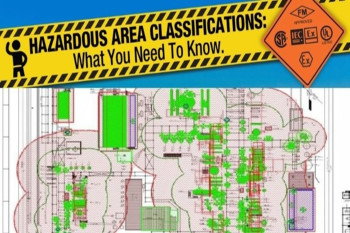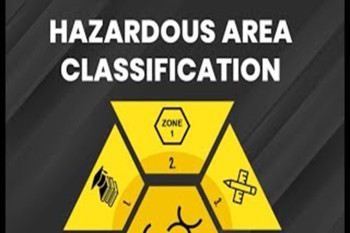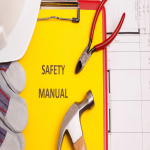METHODOLOGY FOR HAZARD OPERABILITY (HAZOP) STUDY
1 OBJECTIVE
The purpose of HAZOP Study is to identify the hazard and operability problems and to reduce the probability and consequences of an incident in the process facilities that would have a detrimental impact to the personnel, plant, properties, environment and company reputation.
This Method describes the organization, study methods and recording requirements for HAZOP studies. Its purpose is to advise both HAZOP team members and other members of a project, of the approach to be adopted as well as the other contributions required from individuals. It is based upon considered worldwide best practices and international benchmarks in HAZOP deployment and management.
2. SCOPE
This guideline specifies the structure, responsibilities and techniques of the Hazard & Operability Study. HAZOP studies shall be applied to all new, continuous process designs, including package units & utility systems.
This technique is normally applied, when the design is essentially completed and the P&IDs have been developed and contain all essential information are approved and freeze. However, the applicability of HAZOP during the various life cycle phases of the system is described below as per IEC 61882 STD
3. Reference for HAZOP Methodology
IEC 61882: 2016 Hazard and Operability Studies (HAZOP Studies) Application Guide
Guideline for Engineering Design for Process Safety by CCPS, AICHE
“A Guide to Hazard and Studies” published by the Chemical Industries Association Limited, London, 1979 (prepared initially in ICI).
“Guidelines for Hazard Evaluation Procedures “, CCPS, AICHE
Chemicals “European Chemicals Agency“ Number
4. ORDER OF PRECENDENCE
IEC 61882: 2016 Hazard and Operability Studies (HAZOP Studies) Application Guide
As per Client Guidelines
National & International reference books.
5. Proposed Methodology
5.1. Introduction
The technique for a Hazard & Operability Study, (HAZOP), has been developed to provide a systematic method of analyzing the causes and effects of abnormal plant operations.
This guideline describes the organization, study methods and recording requirements for HAZOP studies. Its purpose is to advise both HAZOP team members and other members of a project, of the approach to be adopted as well as the other contributions required from individuals. It is based upon considered worldwide best practices and international benchmarks in HAZOP deployment and management.
This guide is applicable to plant, process and utility systems. Coverage shall include all lines containing hydrocarbons or fluids which could pose a hazard and utilities e.g. flare, open & closed drainage systems, firefighting systems, and emergency systems cause and effect logic
The basic requirement is that the HAZOP team questions every aspect of the design to determine how deviations from normal operations can lead to hazardous situations or operability problems.
The HAZOP Chairperson shall plan and control the sequencing of the study. The strategy involves a brief description of the system by the Process Engineer, after which the Chairperson selects the first item of equipment or process path (Node) to be examined.
The function/intent of the equipment or system within the Node is explained and its explicit purpose agreed by the team. The Chair-person selects “process parameters” and "guide words" in sequence, to examine all parts of the system.
5.2. Methodology
These steps are illustrated in the flowchart below
Select a Node, which contains an elementary unit of the plant.
Define the Node design intent and process conditions.
Apply the first parameter to the node such as Flow, Pressure, Temperature, Level, Composition, etc.
Apply suitable Guide Word such as more, less, etc. to obtain a Deviation of the Parameter.
Identify the potential and credible Causes associated with the Deviation by brainstorming.
Assess the Consequences of each cause.
Identify Safeguards included in the design to prevent and/or mitigate the hazard.
Agree a Recommendation for action if the existing safeguards are found to be inadequate. If an immediate solution is available and acceptable to the team, the modification is recorded in the HAZOP worksheet and HAZOP master P&ID will be marked up accordingly. Where solutions are unlikely to be derived without a technical evaluation, the Chairman will refer the problem for separate assessment.
Repeat the above procedures to the next guideword (move to step 4) until these guide words have been completed.
Repeat the above procedures to the next parameter (move to step 3) until these parameters have been completed.
Move to the next node (go step 1) of the process system. All process systems will be examined
Figure 1: HAZOP Methodology Flow sheet
5.3. Project Deliverables
Table 1: HAZOP Study
5.4. Fundamental Assumption
The HAZOP Methodology is based on the following assumption:
The potential for hazard and operability problems does not exist when the process is operating within its design envelope.
Cause shall be in the same node; consequences can be anywhere in the process.
Everything is running well and then “SOMETHING” happens
5.5. Exclusions
Simultaneous occurrence of two unrelated incidents
Operator’s negligence (Except common human error)
Simultaneous failure of more than one independent protective device
Natural calamity (Flood, Earthquake) except where it is design case
External fire/escalation
Object falling from sky
Sabotage
Mechanical protection devices( PSV, Rupture disc) are expected to work
No quantitative analysis will be done during HAZOP session
5.6. Software to be used
PHA Pro version 8.19 software.
DISCLAIMER
HSE Risk Management Services Private Limited accepts no liability or responsibility whatsoever for it in respect of any use of or reliance upon this Methodology by any third party.
Copying this Methodology without the permission of HSE Risk Management Services Private Limited is not permitted.









